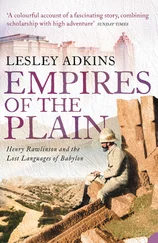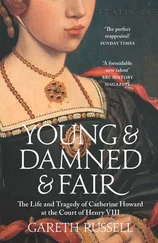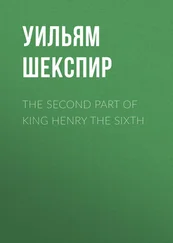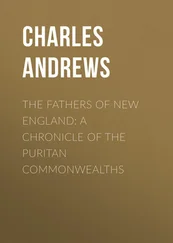Aquiline, with the pronounced jawline for which the Habsburg dynasty was already renowned, Maximilian was a man of capricious brilliance, a builder of prodigious – and half-finished – castles in the sky. Machiavelli, echoing the common view, thought him impossibly fickle, rarely taking counsel before deciding on a plan of action, then, when doubts were aired, dropping it and moving on to something else. Henry thought much the same. ‘How I wish,’ he once said through gritted teeth, ‘that the emperor would not undertake any enterprise except through mature consideration.’ 5The hare-brained scheme of Maximilian’s that had almost brought Henry’s regime to its knees was his backing of Warbeck, in conjunction with Margaret of Burgundy. And now, apparently, he was at it again.
That September, at St Johann in the Austrian Alps, Maximilian listened with sympathy to Suffolk’s indignant description of Henry’s crimes, and how he ‘intended to have murdered him and his brother’, before regretting that he could not aid Suffolk openly, given the treaties in place between his son Philip of Burgundy and Henry. But he gave the earl license to stay, safe passage throughout the imperial territories and a guarantee of military backing, and packed him off to the city of Aachen. There, Suffolk started to plan. 6
The small group of supporters with Suffolk included his younger brother Richard, a mixture of his household servants – including his indefatigable steward Thomas Killingworth – and Yorkist backsliders such as Sir George Neville, a face all too familiar to Henry’s agents. Feelingly referred to in official dispatches as ‘the bastard’, Neville was an illegitimate member of one of the most powerful of England’s noble families. A body servant to Richard III, he had become reconciled to Henry after Bosworth, before fleeing England in the 1490s to become a member of Perkin Warbeck’s small court-in-exile. In Scotland, one of James IV’s chief advisers had seen Neville for the political butterfly he was: declaring for Warbeck one minute, hoping to make up with Henry the next, his loyalties seemed to tie themselves in knots. Although, finally, he had drifted away from the pretender and, pardoned by Henry, returned to court, his loyalties remained skin-deep, and Suffolk’s plot had proved too good an opportunity to resist. 7
Others came from Suffolk’s stamping ground of East Anglia: men with long-held ties of affinity to the de la Poles, like the Norfolk knight Sir John Wyndham and his son Thomas, whose Yorkist loyalties had been reignited by their own personal resentments and quarrels. When, following Suffolk’s first flight, Henry had kept a beady eye on the loyalties of his supporters, Thomas Wyndham had failed to answer a summons to London to report to the king and his council, and had been bound for £200 as a result. Another local family who fell under suspicion were the Tyrells of Gipping in Suffolk. The Tyrells provided a link in the chain of conspiracy which led south, across the Dover Straits, to the English colony of Calais. 8
A low-lying, marshy enclave stretching eighteen miles along the coast and pushing some eight to ten miles inland, the Pale of Calais nestled between French Picardy to the west and, to the east, the imperial-dominated territories of Flanders. Inland, its borderlands were policed by the hulking fortresses of Guisnes and Hammes. On the coast, facing England across the Dover Straits, sat Calais’s heavily fortified port town, its capacious harbour guarded by the Rysbank Tower and by Calais Castle. Calais was a constant drain on crown resources. It maintained one of only two standing royal armies – the other being at Berwick, on the Scottish border – of around five hundred men; its defences, meanwhile, required constant upkeep and renovation, as the sea seeped into the walls and foundations of town and castle, rotting timber and eroding stone. But it was worth it, for Calais was one of the ‘principal treasures’ of the crown, of both strategic and economic importance. It was home to the staple, the crown-controlled marketplace for England’s lucrative textile trade, whose substantial customs and tax revenues flooded into Henry’s coffers. During the civil wars, Calais had acted as a base for rebel invasions. When in 1484 the captain of Hammes Castle, Sir James Blount, defected to Henry with his garrison and his Lancastrian political prisoner John de Vere, earl of Oxford, it was a significant boost to Henry’s cause. Conversely, the following year, as Henry ascended the throne, some two hundred pro-Yorkist troops had deserted to Maximilian. On a constant state of alert, the town’s walls were silhouetted with sentries and guards, while its narrow streets swarmed with troops, merchants, diplomats and ambassadors. And it fully upheld its reputation as a hotbed of disaffection and espionage. 9
Early in his reign, Henry had given Calais’s chief military command to one of his most trusted officers, Giles lord Daubeney. He also needed men experienced in the unique vagaries of Calais’s government, and that had meant reappointing people like Sir James Tyrell, captain of Guisnes Castle and formerly one of Richard III’s lieutenants. After Bosworth, Henry had imprisoned Tyrell but then, reassured perhaps by his family connections – he was Daubeney’s brother-in-law – had restored him to his post. Tyrell had remained loyal to Henry during the 1490s, when the town was riddled with sedition and when members of his own family had become entangled in Warbeck’s conspiracy. Then, in the summer of 1499, after his first flight abroad, Suffolk had travelled through Calais on his way back to England, and had dropped in at Guisnes, where he stayed as Tyrell’s guest. 10
On the face of it, there was no reason why he should not have put Suffolk up. Following his chat with Henry’s emissary Sir Richard Guildford, Suffolk was returning to England of his own free will and, with his East Anglian connections, Tyrell was an obvious port of call. Neither did the episode provoke any immediate response from Henry. Tyrell ostensibly continued in favour and some months later was co-opted on to one of the planning sub-committees for Arthur and Catherine’s wedding. But in the autumn of 1499, at around the same time that Henry started to put the screws on Suffolk and his retainers, he issued Tyrell with a financial bond for allegiance of £300, then confiscated one of his lucrative royal estates, leasing it instead to a group of local farmers for an inflated rent. Henry never missed a chance for a quick profit – but, characteristically, it was also a warning shot. Tyrell’s consorting with Suffolk had been noted.
By the summer of 1501 Tyrell was simmering with resentment. If, previously, his welcoming of Suffolk had been innocent, his long-dormant Yorkist loyalties had been provoked: Guisnes declared for Suffolk. And there was more bad news from Calais. Sir Robert Curzon, captain of the neighbouring fortress of Hammes, had gone over to Suffolk as well. Not only that, but it was, apparently, Curzon who had brokered Suffolk’s flight to Maximilian. 11
Part of the jousting set at court, Curzon, like Tyrell, was one of Henry’s household knights, another ex-Ricardian whom Henry had grown to like – they played tennis together, Henry tended to lose – and, in 1498, he had appointed Curzon captain of Hammes. The following summer, around the time Suffolk turned up in Calais, Curzon applied to Henry for a licence to leave his post and go on crusade against the Ottoman Turkish army which, cutting a swathe through the Balkans, was currently encroaching on the south-eastern border of the Holy Roman Empire. Curzon, in other words, was going to fight for Maximilian. To Henry, it seemed like a good idea. He and the emperor were in their period of post-Warbeck détente and, at a time when Maximilian was badgering him for large financial loans, it was a cost-effective way of showing his friendship – as well as gaining a reliable line of information at his erstwhile enemy’s court. 12
Читать дальше












